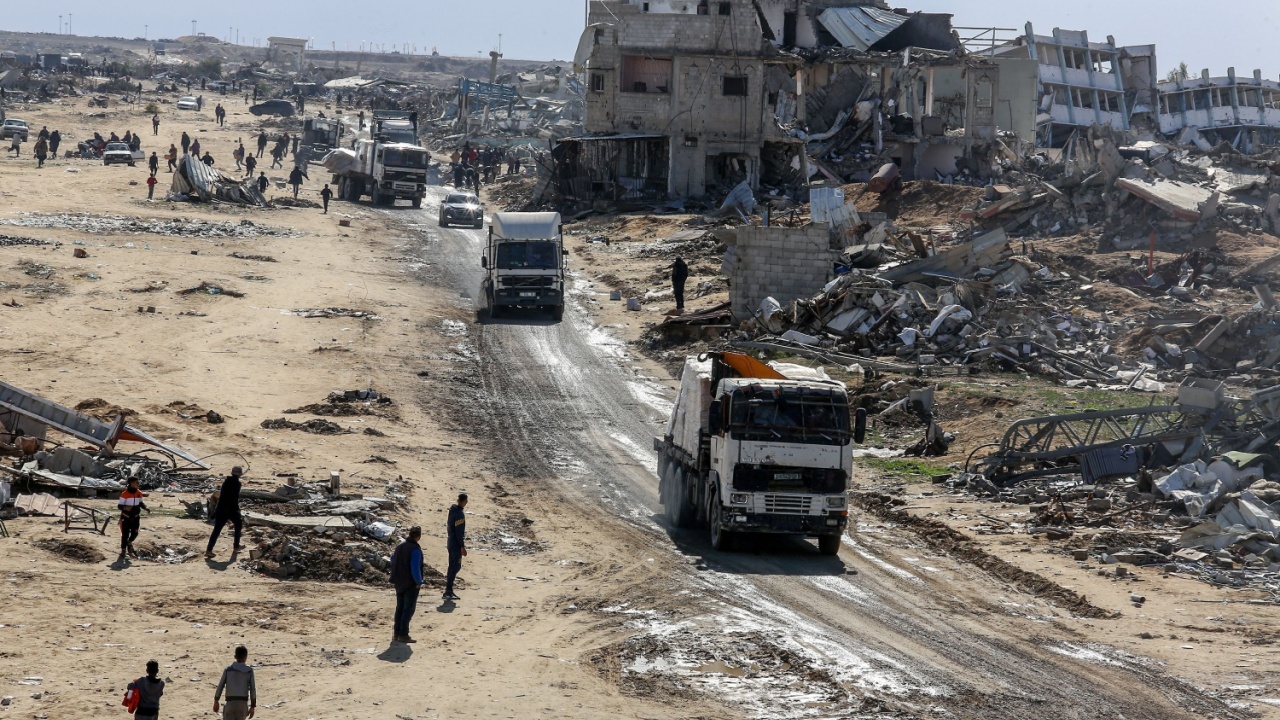The Struggle for Control in Gaza: A Path Toward Ceasefire?
The ongoing conflict between the Israeli Defense Forces (IDF) and Hamas in Gaza has stretched into its 21st month, with both sides showing signs of exhaustion. Recent developments suggest that a ceasefire may be on the horizon, potentially within the next two months. As operations continue to intensify, the situation on the ground reveals a complex interplay of military strategy, political challenges, and humanitarian concerns.
Expanding Operations and Evacuation Orders
In early July, the IDF issued evacuation orders for areas near Deir al-Balah, a coastal town that has long been a focal point for Hamas activity. This region, built around a refugee camp established in 1948, remains under Hamas control despite more than 650 days of continuous warfare. The IDF’s focus on this area is seen as an attempt to pressure Hamas into negotiations, but talks have stalled in recent weeks.
The Israeli military leadership faces significant challenges, including a lack of a clear political strategy from above. There is no straightforward way to replace Hamas governance in the Strip, especially since the Israeli government opposes the Palestinian Authority’s rule over Gaza from the West Bank. This creates a power vacuum that could lead to further instability if the current conflict continues.
The Human Cost and Hostage Situation
The war began with a brutal Hamas attack on Israel in October 2023, which resulted in over 1,200 deaths and 251 hostages taken. Today, 50 hostages remain in Gaza. While the official goal of the war is to secure their release, the process has proven difficult. Most hostages have been freed through special forces raids or negotiated deals, such as the one in November 2023 and another in January 2025.
The United States has supported efforts to secure a hostage deal, while Qatar and Egypt have played key roles in mediating discussions. Qatar, which hosts Hamas political leaders, provides a platform for dialogue, even as Hamas loses many of its commanders in the conflict. This shift in leadership dynamics may influence future decisions and strategies.
Hamas’ Resilience and Tactics
Hamas has adopted a strategy of endurance, often retreating to underground tunnels after initial attacks and returning to areas where the IDF has conducted heavy operations. In Beit Hanoun, near the Israeli border, Hamas recently killed five IDF soldiers, demonstrating its continued operational capacity. Even in heavily bombed regions, Hamas fighters have managed to regroup and continue their activities.
This resilience is partly due to the large population in Gaza, where approximately 2 million civilians live under Hamas rule. With a young population—half of whom are under 18—Hamas has access to a steady supply of recruits. The group only needs a small percentage of these young men to sustain its military operations.
Challenges for the IDF
While Hamas continues to endure, the IDF faces growing difficulties. Reports indicate that reservists are experiencing increasing fatigue after years of continuous service. Many have been deployed for months on end, with some serving most of 2024 and then being called back in April and May 2025. This prolonged engagement is taking a toll on morale and readiness.
Additionally, the IDF struggles with recruitment due to the exemption of 80,000 ultra-Orthodox Jewish men from military service. This loss of potential combat personnel adds to the strain on the military. Despite these challenges, the IDF brass appears to be pushing for expanded operations in July and August, with a possible drawdown of troops afterward.
International Pressure and Humanitarian Crises
The international community has increasingly called for an end to the conflict. The United States has backed a ceasefire and facilitated talks in Qatar. Countries like Saudi Arabia also want the war to conclude. Surveys show that 74% of Israelis support ending hostilities.
Humanitarian efforts, such as the Gaza Humanitarian Foundation, have faced criticism and limited success. While the foundation distributes millions of meals daily, reports of violence at aid sites have raised concerns. Although the IDF and the foundation dispute these claims, a tragic stampede on July 15 resulted in 20 deaths, prompting the UK and 27 other countries to call for an immediate ceasefire.
Looking Ahead
With the IDF facing internal challenges and global pressure mounting, the next few months could be pivotal. A ceasefire seems increasingly likely, though the terms remain uncertain. Hamas will likely seek to maintain its position, while Israel aims to secure its goals. The path forward will require careful negotiation, international cooperation, and a commitment to ending the cycle of violence.







